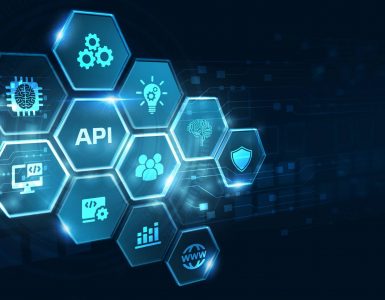TestOps refers to integrating testing practices within software delivery pipelines to optimize and scale quality assurance. It combines elements of test automation, continuous testing methodologies, collaboration practices, and data-driven insights to enable high software release velocity without compromising on quality.
But, how do you decide if it is worth the effort at your organization? Well the experts at Talent500 have curated this guide to help you understand all ins and outs of TesTops from DevOps point of view to help you make informed decision.
Let’s begin:
Basics of TestOps

TestOps extends DevOps practices to testing activities. It focuses on optimizing and managing testing processes to accelerate feedback loops across build, test, release cycles.
Core Drivers for TestOps Adoption
- Accelerating release cycles in modern software delivery demands efficient testing practices to ensure quality without slowing down deployment cadences. TestOps meets this need through test automation and shift-left testing.
- Testing in isolation delinked from development leads to issues being found late. Integrating testing within continuous delivery pipelines enables early feedback.
- Lack of visibility into testing coverage, environments, and data hinders risk-based decisions on quality. TestOps provides data and analytics to address this gap.
- Uncoordinated collaboration between testers, developers and ops team causes misalignments. TestOps fosters shared ownership and common objectives across these teams.
Four Key Components of TestOps Framework
- Planning and Strategy: Defining testing scope, coverage goals, types, environments, data needs at both feature and system levels
- Execution and Automation: CI/CD integration, test environment provisioning, running automated test suites, accelerating test cycles
- Monitoring and Control: Tracking test progress, coverage and stability metrics, managing test data, monitoring test environments
- Analysis and Insights: Failures analysis, coverage reporting, quality benchmarking and improvements based on tangible data
Comparison to DevOps
While DevOps enables collaboration between dev and ops teams to optimize delivery; TestOps focuses on bringing testing into that continuous workflow to enhance confidence in release quality.
Key Benefits of TestOps
- Faster delivery of high-quality, robust software
- Reduced risk by preventing defects and ensuring comprehensive test coverage
- Enhanced customer satisfaction through stability and performance
- Increased testing efficiency via process automation
- Continuous quality benchmarking powered by data insights
- Closer collaboration between testers, developers and ops teams
Importance of Testing in DevOps Environments
In this section, we will understand the challenges of ensuring quality in agile delivery models:
- Manual testing struggles to keep pace with faster build cycles
- Lack of documented test cases for reliable regression testing
- Hard to optimize testing bottlenecks without data
- Unplanned test environments instability causes flaky tests
- Shift Left Testing and Continuous Verification:
- Shift left testing brings quality checks earlier in delivery life cycles enabling faster feedback on code changes. TestOps powered frameworks automate these pipelines.
Need for Smarter Test Automation: Carefully identifying test scenarios provides the right coverage without bloating test suites. AI powered auto-suggestions further enhance automation efficiency.
Requirements for Optimization and Data Insights
TestOps provides a managed, metric-driven approach to testing via capabilities like:
- Shared dashboard providing quality benchmarks
- Tracing test environment availability and stability
- Analyzing test failures through logs and videos
- Identifying gaps in test coverage
By enabling data gathering across test cycles, TestOps empowers continuous optimization of test reliability, coverage and environments.
Key Elements of a TestOps Framework
In this section, we will understand the key drivers behind a dependable TestOps framework:
Test Planning and Strategy:
- An integral first step is defining scope of testing from unit to end-to-end, setting coverage criteria, identifying test types like functionality, UI flows, security, performance, and environments with optimal test data. Frameworks provide collaboration capabilities to engage cross-functional teams in planning to maximize context.
- Reusable libraries further optimize planning by avoiding reinventing reliable test components.
Execution and Test Automation
Integrating testing seamlessly into CI/CD pipelines is key, with test automation triggering on code commits and environments provisioned on demand. Frameworks manage scheduling and scaling of parallel test runs across environments. Automated triggers enable notifications and visibility into real time testing progress.
Monitoring Test Progress
TestOps enabled lifecycles require monitoring capabilities to track test cycles from environments availability to test suite stability metrics. Customizable dashboards offer real time visibility enabling proactive issue resolution. Traceability of test failures via screenshots and session videos accelerates root causing.
Metrics and Reporting
Informed quality decisions need tangible metrics vs gut feel. Frameworks gather execution data spanning tests, environments, failures to generate trends on:
- Lead times from test run to reporting
- Overall case pass %.
- Tests failing periodically indicating flakiness vs code issues
- Test environments uptime and blast radius
- Percentage of planned test coverage completed
Using these metrics, TestOps provides benchmarking on software stability and suggestions on improving its testing processes.
Building a TestOps Culture
Given TestOps calls for closer collaboration between testers, developers and IT ops, nurturing the right culture is vital for success. In this section, we will see how you can do so:
Improving Communication Between Teams
Being transparent on objectives, expectations and challenges via engagements like sprint planning fosters mutual understanding across. Developing shared metrics on software quality brings alignment.
Enabling Shared Ownership of Quality
Quality cannot be the tester’s responsibility alone. Developers building software iteratively and ops teams managing test environments play an equal role. TestOps breaks traditional silos by integrating quality verification across the delivery chain, enabling shared ownership.
Strategic Alignment of Testing
Presenting testing as merely defect identification misses the point. When testing strategy tightly aligns with business priorities, quality processes evolve to enable faster feature delivery, stable customer experiences etc.
TestOps helps improve this alignment – development teams rely on test automation frameworks to accelerate dev cycles, while testers develop targeted test scenarios mapping to annual business goals.
Building a Culture of Continuous Learning
Introducing modern paradigms like TestOps can face adoption inertia. Teams continue finding gaps via periodic retrospective analysis into aspects like skills, tools and processes. Addressing these collectively fosters a culture of continuous improvement critical to leverage TestOps fully.
People and Processes for Successful TestOps
Like any other DevOps focus area, TestOps relies heavily on people and process:
Cross Functional Teams
Matrix teams encompassing testers, developers and IT operations collaborating closely enable TestOps to realize faster feedback loops. Certifications and enablement equip teams with shift left mindsets and CI/CD capabilities critical for the approach.
Optimal Communication Flows
Issues found during testing typically invoke the counter-productive “over the wall” syndrome, where testers file tickets that vanish for ages. Integrating reporting APIs directly into delivery pipeline surfaces actionable issues immediately to relevant owners. Similarly CI/CD events notify downstream teams – accelerating engagement.
Institutionalizing Feedback Loops
To enable rapid issue resolution, instituting checks like requiring sign-offs on code fixes builds accountability. Scheduling periodic reviews between testers and devs avoids unresolved failures accumulation – helping sustain team velocity.
Change Management
Unplanned changes in test suites, environments and data states can severely damage release stability. Review processes ensure test alterations align with the defined scope. Traceability around test environment inventory changes enables rollbacks where needed.
Optimizing Test Environments and Data
Next, we will have a closer look at test environment and data optimization best practices to improve TestOps efficacy:
Production Parity in Test Environments
While identical staging environments may be infeasible, teams strive for production parity to minimize unexpected issues. TestOps enable capabilities like sandbox templatization, test data masking help bridge the chasm.
Smart Test Data Generation
Managing test data consistently across automation suites minimizes false positives. TestOps frameworks help tackle this by:
- Masking sensitive data for compliance
- Generating test profiles uniquely on each run
- Sampling production data within guard rails
Environment Availability Tracking
To analyze testing velocity challenges, TestOps platforms track metrics like environment availability and lead times. RapidTest leverages elastic cloud infrastructure to provision test environments on demand – reducing queue times.
Optimizing Testing Cost
Running extensive test suites on on-premise or cloud infrastructure running 24/7 accumulates massive costs. TestOps helps optimize this by:
- Scheduling specific suites to run in cost-effective windows
- Auto-scaling test environments based on demand
- Accelerating test cycles to require shorter runtimes
Integrating CI/CD Pipelines and Tools
In this section, we will go through the fundamentals of CI/CD pipeline and tools integration with respect to TestOps:
Native Integration with CI/CD Platforms
Natively embedding test automation suites into CI/CD platforms like Azure DevOps, Jenkins avoids the need for custom scripting. Configuring test jobs as pipeline stages enables gating code commits based on test results – preventing bad builds.
Compatibility with Test Automation Frameworks
From commercial tools like Tricentis Tosca to open source options like Selenium and Appium – TestOps platforms provide native compatibility. This reduces business disruption by retaining existing test assets while still benefiting from centralized reporting, analytics of TestOps.
Standard Testing Protocols:
Legacy APIs and protocols tightly couple automation suites to parent tools. Adopting testing frameworks exposing standard APIs like Cypress or common adapters delinks test logic – preventing lock ins while enabling portability.
Interoperability with Monitoring tools
Testing a complex system end to end requires inspecting all components. TestOps platforms achieve this by interfacing with leading APM, infrastructure and logging analysis tools – aggregating quality signals from all layers into a single dashboard.
Scaling TestOps Across Distributed Teams
Now that you are well versed with the ins and outs of setting up and scaling TestOps at your organization, let us now focus on how you can scale your TestOps efforts:
Enabling Parallel Test Execution
As automated test suites grow larger, serialized test runs increase lead times. Integrating parallel processing abilities like RapidTest’s TurboTests reduces execution times – enabling frequent regression.
Reusable Test Components
Copying repetitive test logic across suites requires significant maintenance. Components like step definitions, utility functions, complex data setup handled once centrally foster reuse – improving consistency and accelerating authoring.
Effective Test Scheduling
Coordination needs grow exponentially as distributed teams scale test automation. Shared test calendars provide visibility enabling teams to schedule test runs minimizing conflicts and downstream failures.
Centralized Reporting and Analytics
Disparate testing tools and incomplete reporting deter informed decisions. Consolidating quality metrics, test trends from all systems involved empowers fact based tradeoffs on release readiness, coverage expansion needs etc.
Managing Device Farms Remotely
Validating functionality across diverse desktops, mobiles, tablets requires orchestrating various physical devices. TestOps solutions provide easy remote management – avoiding tendering test runs across disconnected labs.
Tackling TestOps Adoption Challenges
As you scale up TestOps, you’ll face the below challenges and we have outlined the remedies to help streamline the implementation:
Addressing Skill and Knowledge Gaps
New paradigms like TestOps warrant training engineers on CI/CD integration, test automation. RapidSkill, our eLearning platform empowers teams via microlearning video courses and sandboxes. Evaluating expertise limits helps customize enablement programs effectively.
Taming Tool Chain Complexity
Standardization principles help reduce the testing tool sprawl often plaguing enterprises. Creating guidelines on automating what type of test in which platform, provisioning central reporting layers aid consolidation. Reuse also helps teams minimize additional tools.
Overcoming Cultural Resistance
Driving change management requires addressing intrinsic mindset challenges. Workshops clarifying misconceptions around release quality risks help. Analyzing before/after metrics areas like release confidence, avoidance costs make value realization tangible.
Increasing Reporting and Metrics Clarity
Unclear quality reporting causes strategy dilution. Collecting feedback early on relevant metrics, iterating dashboard designs based on what decisions teams need to take helps sustain engagement. Building trust in data requires transparency.
The Road Ahead – TestOps Innovations
While TestOps principles are being increasingly adopted today to maximize quality and velocity; the pace of innovation in this space continues unabated. Advances in complementary technologies like AI, ML and shifts in software delivery models are introducing new opportunities to enhance TestOps frameworks further.
AI for Smarter Test Authoring
AI is making test case authoring significantly easier by generating automated flows from natural language test scenarios. Tools like RapidTest allow users to describe test steps in plain conversational English which then automatically get converted to executable Selenium scripts. This opens up test creation to non-coders, improves consistency and reduces maintenance costs.
The self learning abilities of such AI testing assistants further build on initial test suites to expand coverage through smart recommendations. Prior execution data and change impact analysis provide context to suggest additional critical test cases worth covering.
Shifting Security Testing Left
Traditional testing cycles perform security validation late, causing delays or escaping issues. Modern DevSecOps practices manifest as:
- Unit test guidance on safe coding standards
- Component scanning providing early feedback
- Infrastructure as code security analysis
By deeply integrating security checks early in CI/CD pipelines, risks get unearthed early; allowing faster remediation.
Test Environment Management Evolution
Maturing cloud technologies are transforming test environment provisioning from slow, manual processes to programmable infrastructure. Containerization and infra-as-code techniques allow testing platforms to instantly spin ready-to-use, production grade test environments on demand – accelerating test cycles.
Sophisticated controls around test data management help maintain parity with production while ensuring compliance using data masking and synthetic data generation.
Democratization of Testing
No-code test automation solutions open up testing for non-developers. Business users can build automated smoke tests spanning desktop, web and mobile apps by visually guiding tools through required steps and validations. Expanding contributors beyond technical specialists allows scaling test coverage quicker.
New Age Testing Frontiers
TestOps is set to cover innovative testing areas like:
- Chaos testing – validating system resilience by injecting failures
- AI powered generation of complex test data
- ML testing – validating fairness and unbiasedness
- Quantum algorithm based testing
TestOps frameworks would need robust extensibility and customization capabilities to accommodate new testing paradigms like these.
The Pace of Innovation Persists
As software continues eating the world across industries and purposes, shipping high quality code quickly becomes non-negotiable. Increasing system complexity mandates scalable testing practices enabled by TestOps to prevent slowed velocity.
The incredible pace of invention across software delivery and testing tools means teams must stay continually updated on advances relevant to their ecosystem. Committing to continuous improvement of testing processes is vital to leverage innovations matching to evolving business needs.
Getting Started with TestOps
Now that we’ve covered the key concepts and components of TestOps, let’s go through some practical steps to kickstart your TestOps journey:
Define Your Testing Maturity
First, objectively assess your current testing practices and capabilities. Identify areas that need improvement – do you need better test planning or environment management? This helps create a focused roadmap. You can use the Test Maturity Model (TMM) as a guideline.
Start Small But End-to-End
While transforming all testing in one go is appealing, progress incrementally by proving value before expanding. Start with a targeted, high visibility project going end-to-end across test planning to automation execution tracking. Let it serve as the lighthouse.
Identify Quick Win Opportunities
Scan existing test assets to spot opportunities for quick wins via automation. Examples – error prone manual smoke tests, redundant workflows, complex test data setups. These help build credibility for sustained leadership support.
Institute Central Reporting
Before tackling complex dashboarding, start small by funneling dispersed test reports into a shared quality portal. Making metrics accessible alone increases visibility, primes teams for metric driven decisions.
Infuse TestOps Into Processes
Identifying tools alone won’t transform mindsets overnight. Integrate relevant TestOps stages into existing processes – require test planning during story point estimation or add environment stability in retrospective agendas.
Enlist Change Champions
Culture shifts require cheerleaders. Identify respected influencers from various teams to validate proof points, advocate wins and über evangelize testing! Voluntary interest is the best asset here.
Things To Keep In Mind Before Implementation For TestOps Success
Like any transformational change, implementing TestOps requires sustained rigor. Here is a list of key focus areas and best practices worth paying attention to, to realize the full benefits of TestOps:
Walk Before You Run
Have a pragmatic roadmap focussing on quick iterations that make a material difference vs a big bang makeover. As priorities shuffle with business needs, this makes pivots easier.
Engage Cross Functional Teams
Testing in isolation delivered by individual groups doesn’t cut it anymore. Get your dev, ops and test teams talking frequently – break silos. Common understanding of outcomes and hurdles helps tremendously.
Listen to Feedback Actively
Proactively seek feedback, implement tweaks, tune alerting smartly until information radiating out of your TestOps data model tangibly helps implicit decisions made. The usage determines true value.
Right Size Test Automation
Avoid falling into the trap of machine gun test automation that’s inefficient and unreliable. Take stock of existing tests and environment needs carefully – it’s easy to over engineer stacks leading to maintenance burdens.
Update your Backlog Actively
Let your TestOps backlog serve as the heartbeat capturing actionable work needs across test planning, environment stability, gaps in analytics coverage etc. New pain points will surface as adoption increases. Stay nimble.
Install Guard Rails for Quality
Only having guidance runs the risk of dilution and gaps. Put guard rails like requiring peer reviews for test changes, enforcing environment stability checks before UAT, blocking bad builds automatically.
Measure more than Lagging Outcomes
While quality mishaps provide rich lessons, measuring lead indicators create opportunities for course correction before incidents. Prioritize forward looking metrics – flaky tests, SLO breaches.
Recognize Quality Advocates
Enable organic advocacy by recognizing teams and individuals invested in elevating quality practices. Well timed appreciation goes a long way in cementing the culture as opposed to just mandating new methodologies.
Stay Current on TestOps Innovations
Don’t get complacent by reaching version 1 state thinking you’ve arrived. The software quality and testing space keeps rapidly evolving with new tools and paradigms. Commit to continuous development.
Wrap Up
We hope these insights help accelerate your team’s TestOps adoption. TestOps is yet to become mainstream at most organizations but the adoption rates will continue to rise given its inherent positive impact on the challenges faced by DevOps teams.
Tired of WFO mandates and low pay?
Signup on Talent500 now to get high paying, remote DevOps jobs at top organizations.






Add comment